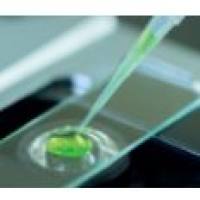Nonradioactive Methods for Visualization of Protein Blots
互联网
互联网
相关产品推荐

HB Western blotting Principles and Methods
¥223

Coronavirus Nucleocapsid重组蛋白|Recombinant SARS-CoV-2 Nucleocapsid-AVI&His recombinant Protein,Biotinylated
¥4520

ECL kit (Bright/SuperBright) (1L),(Size: ECL SuperBright: 2 x 500 ml, two component ready to use solutions, enough for 500 midi blots (6.8 x 8.1 cm). ECL Bright: 2 x 500 ml, two component ready to use solutions, enough for 500 mi
¥25500

On-Site Instructor-Led Course: Biomek Introduction and Methods Programming (service)
¥93500

赛默飞世尔Thermo Fisher STANDARD METHODS AGAR 20PK 货号:T_70102-686-214
¥1200
相关问答

